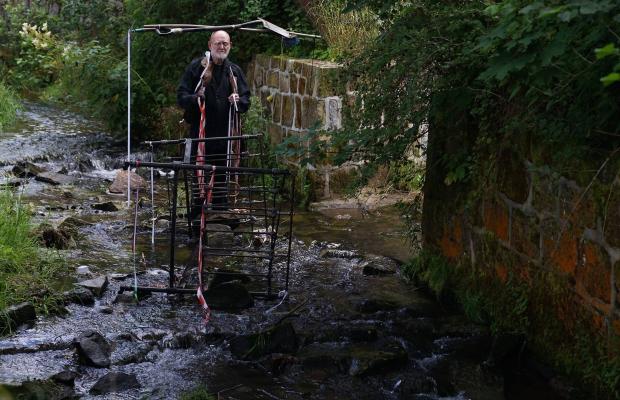
He studied at the Duncan of Jordanstone College of Art and Design of the University of Dundee in 1960-65. 1966-68 he received his Master of Fine Arts from the School of the Art Institute of Chicago, Chicago. He now is Emeritus Professor in Fine Art, University of Ulster in Belfast, Honorary Fellow of the Dartington College of Arts, Devon, and Honorary Associate of the National Review of Live Art, Glasgow.
MacLennan’s live work is prevailingly long durational. During the 1970s and 1980s he presented performances in Britain and America, of up to 144 hours. His work looks into political, social, religious, ethical and aesthetical questions.
While some fellow contemporaries believed that art should pursue ideals of beauty and exclude the ugliness of civil war, Maclennan felt his work could not avoid such horrors. He was compelled to refer to everything he experienced and commenced a series of inter-relating actions about art and daily life that would communicate directly to fellow citizens.
On a day in August 1977 MacLennan dressed himself in black for work as usual, hung a dartboard round his neck, and veiling his head and body with polythene walked from his house in loyalist east Belfast via Royal Avenue to the art college.
‘Target’ addressed a number of obvious and critical social and cultural issues, central to which was the vulnerability of the individual as an ordinary citizen and in this case, his role as a performance artist within a tradition-based art school which was, at this time, mostly hostile to his work.
During this period Maclennan developed sustained works that pushed the parameters of personal endurance and performance. These were invariably undertaken in the nude. He obscured his identity and his personality by applying primal substances such as flour and soot to his body. During most of these performances Maclennan went without food and sleep. They ranged from 12 hours in duration to 144 hours or six days and six nights.
These multi-dimensional works had their origins in drawing, but here the drawer was also being drawn, that is, he was an integral component in the process of making an artwork. The space in which the work took place was being gradually altered or ‘actuated’. The drawer/performer was facilitating qualitative decisions, modifying, deviating, resolving insights and possibilities within a carefully prepared space.

